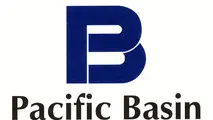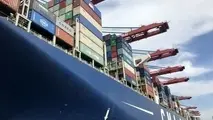EGCSA expects scrubber adoption to soar as IMO 2020 rule looms
The dark clouds shrouding scrubbers seem to be clearing away after myths about installation difficulties and maintenance are being dispelled, while pricing economics for their adoption are becoming increasingly favorable ahead of impending changes in environmental rules in shipping.

The dark clouds shrouding scrubbers seem to be clearing away after myths about installation difficulties and maintenance are being dispelled, while pricing economics for their adoption are becoming increasingly favorable ahead of impending changes in environmental rules in shipping.
The most significant among all upcoming rules so far is the International Maritime Organization’s global sulfur limit for marine fuels.
The IMO will cap sulfur in marine fuels at 0.5% worldwide starting January 1, 2020, from 3.5% currently. This applies outside designated emission control areas where the limit is already 0.1%.
Shipowners will be forced to either switch to using cleaner, more expensive fuels or to install scrubbers.
The industry expects some 10,000 ships to have scrubbers by 2025, Donald Gregory, director at the Exhaust Gas Cleaning Systems Association, or EGCSA, told S&P Global Platts in an interview Tuesday.
This represents another spike in their adoption since their heydays, with over 1,000 ships having ordered or installed scrubbers worldwide as of May 31, 2018, compared with some 300-400 ships in 2016, he said.
Some shipping companies such as Spliethoff, Frontline, DHT and Star Bulk have already taken the lead by opting for scrubbers, while many others are mulling over their potential adoption.
The rising interest in scrubbers comes likely from owners who have looked at the facts, and concluded that vessels of a certain age, with a minimum fuel consumption, the investment makes holistic sense, Gregory said.
There are about 20 companies with appropriate experience and able to take orders and execute, Gregory said.
“I have heard that EGCSA members are finding the scale of the enquiries is more than the number of staff they have to deal with them. So growing human resource quickly enough is possibly proving a challenge,” Gregory said.
Still, orders will be accepted and delivered. The date choice regarding slots for the various steps required will become increasingly prescribed by the suppliers, he said.
Contrary to perception, scrubbers do not require a lot of maintenance, Gregory said.
“I doubt if there is more than 0.5 man-day per month required for scrubbers” he said.
Scrubbing is an established technology, Gregory said.
Until relatively recently the largest installed exhaust handling capacity has been for engine powers in the region of 25 to 30MW.
However, the latest data shows that this has been well and truly exceeded by a retrofitted hybrid system for a 72MW container ship engine, Gregory said, adding that large capacity scrubbers are not confined to retrofits as the maximum size new building installation is a hybrid system for a 65MW engine.
While there might have been some reports of pipe failures due to the usage of incorrect materials or incorrect coatings, the key to successful scrubber use lies in professional project management and high quality installation teams, Gregory said.
Adequate HSFO supply also favors their use as refineries will continue to produce cheap, high sulfur residual fuels post-2020, he said.
This is in line with an emerging view that after the IMO rule is implemented, there will be so much HSFO that it may be cheap enough to justify scrubbers on pure economics, making them a more attractive option for compliance and hastening uptake.
“The current $200/mt [approximate price differential between HSFO and MGO] is viable [for scrubber’s uptake]. In fact lower differentials may work for some ship-owners who believe that to do nothing is commercial suicide,” he said.
The difference in price between HSFO and 0.50% sulfur fuels and the likely advantages of scrubbers when bidding for charters will continue to be some of the decision factors always for scrubbers, he said.



